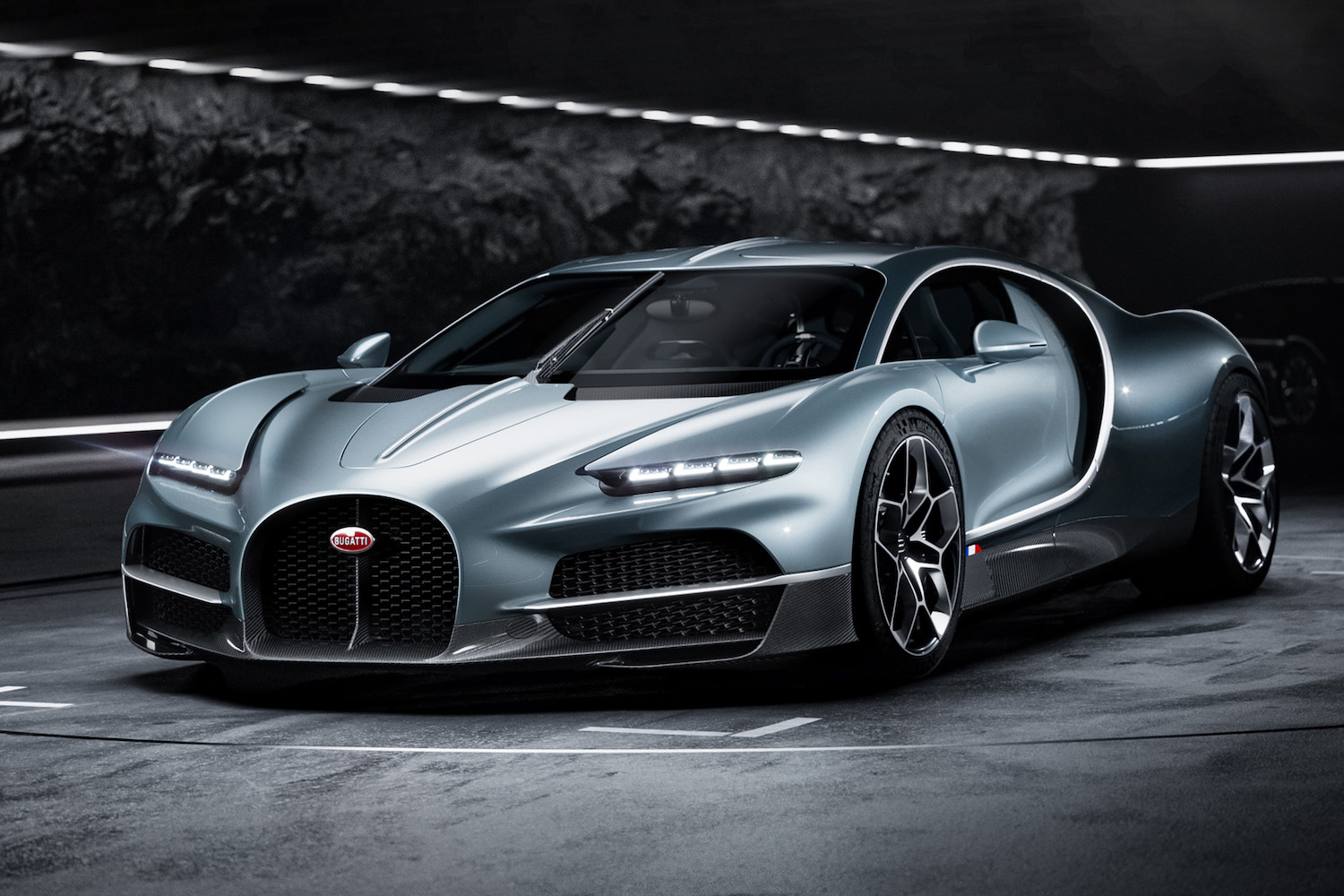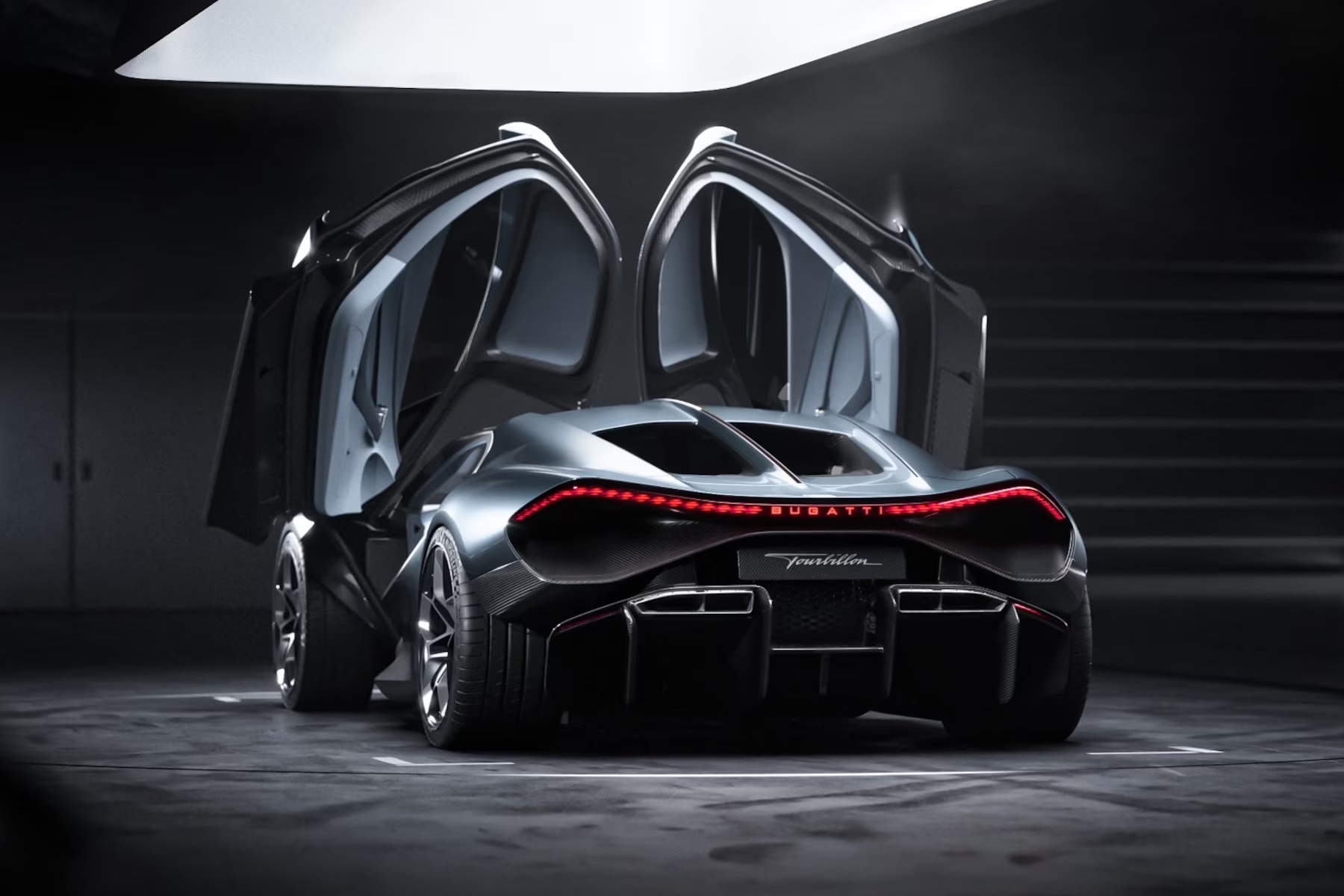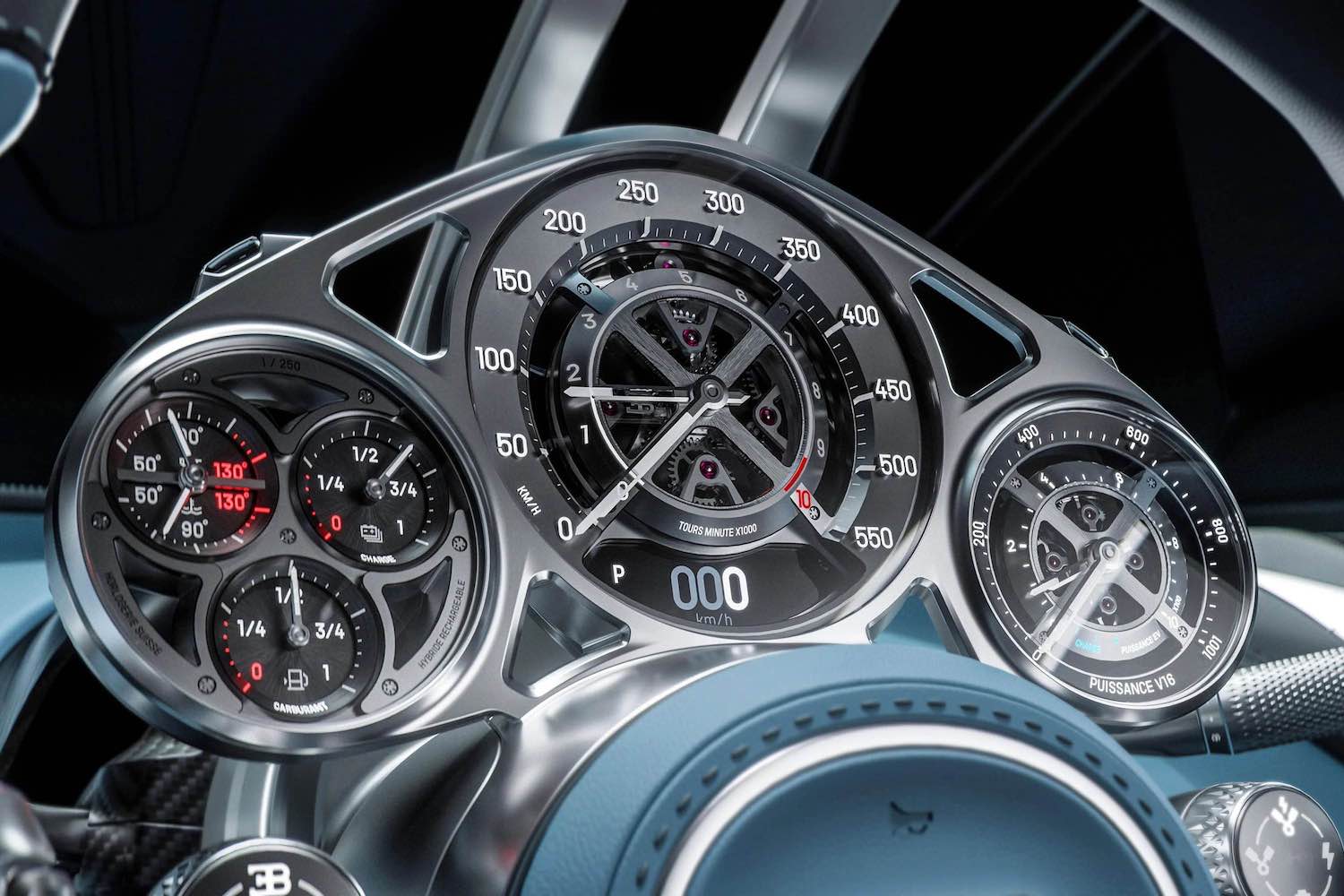Bugatti Tourbillon: 1,800 HP Hybrid Hypercar

Limited to 250 units, the Bugatti Tourbillon is the marque’s most powerful model to date, boasting an instrument cluster inspired by Swiss horology. Following the Veyron and Chiron, the Tourbillon was revealed today as Bugatti’s new 1,800 hp hypercar, surpassing its predecessors in shock and awe. The iconic 8.0-liter quad-turbo W16 engine has been replaced by a 1,000 hp, 8.3-liter naturally aspirated V16, paired with three electric motors adding 800 hp, making it Bugatti’s most powerful creation ever.
The design, while retaining the signature lines of the Veyron and Chiron, features a lower roofline, lighter body, and more aerodynamic structure. The iconic horseshoe grille has become even more imposing. The interior’s centerpiece is an all-new, skeletonized, titanium-and-sapphire-glass instrument cluster inspired by Swiss watchmaking, a nod to the Tourbillon complication that enhances timepiece accuracy. “Beauty, performance, and luxury formed the blueprint for the Tourbillon. We have created a car that is more elegant, more emotive, and more luxurious than anything before it,” said Mate Rimac, Bugatti-Rimac’s CEO, during an exclusive preview at the company’s new design studio in Berlin.

Four years ago, various concepts for a new Bugatti were considered, including an SUV, a coupe-like crossover, and a luxury sedan. A hybrid or all-electric powertrain was also debated. “The proposal to make it electric was the obvious choice, but I felt it was wrong for Bugatti,” Rimac explained. Instead, a true hypercar with a combustion engine was chosen, supported by Bugatti’s customer base. Rimac collaborated with Cosworth, a renowned British engine builder, to develop the V16 engine, designed to rev up to 9,000 rpm. The V16 is paired with twin electric motors driving the front wheels and a third motor at the rear, powered by a 25 kWh, oil-cooled 800-volt battery pack, providing an electric-only range of approximately 37 miles.
The Tourbillon promises blistering speed. Early prototype tests indicate acceleration from 0 to 62 mph in 2.0 seconds, 0 to 124 mph in 5.0 seconds, and 0 to 186 mph in 10.0 seconds, with a top speed target of 276 mph. “It was important that the car retained the pure, raw analog feel of a naturally aspirated combustion engine while pairing it with the agility and ability provided by electric motors,” said Emilio Scervo, Bugatti’s chief technical officer.
The V16 engine is mounted low in the super-stiff body structure made of next-generation T800 carbon composites, featuring a forged-aluminum, multi-link suspension. The exterior design, influenced by the Bugatti Type 35 racer, Type 41 Royale, and Type 57SC Atlantic, focuses on the widened and lowered horseshoe grille. The car’s rear features massive exhausts, a Le Mans-style diffuser, and a rolling wave of LED lights with illuminated “Bugatti” lettering.

Inside, the Tourbillon’s most dramatic feature is the skeletonized instrument cluster, constructed from titanium with sapphire-glass faces and rubies, composed of over 600 components. The entire cluster weighs just 25 ounces. The center console, made of crystal glass and anodized aluminum, includes a prominent aluminum knob for starting and stopping the engine, a nod to Bugatti models of the past. Unlike many modern cars, the Tourbillon eschews touchscreens to maintain a timeless design.
Priced at €3.8 million (approximately $4.08 million), the Bugatti Tourbillon will be highly exclusive, with the first 250 customer cars scheduled for production at Bugatti’s atelier in Molsheim, France, starting in 2026.
